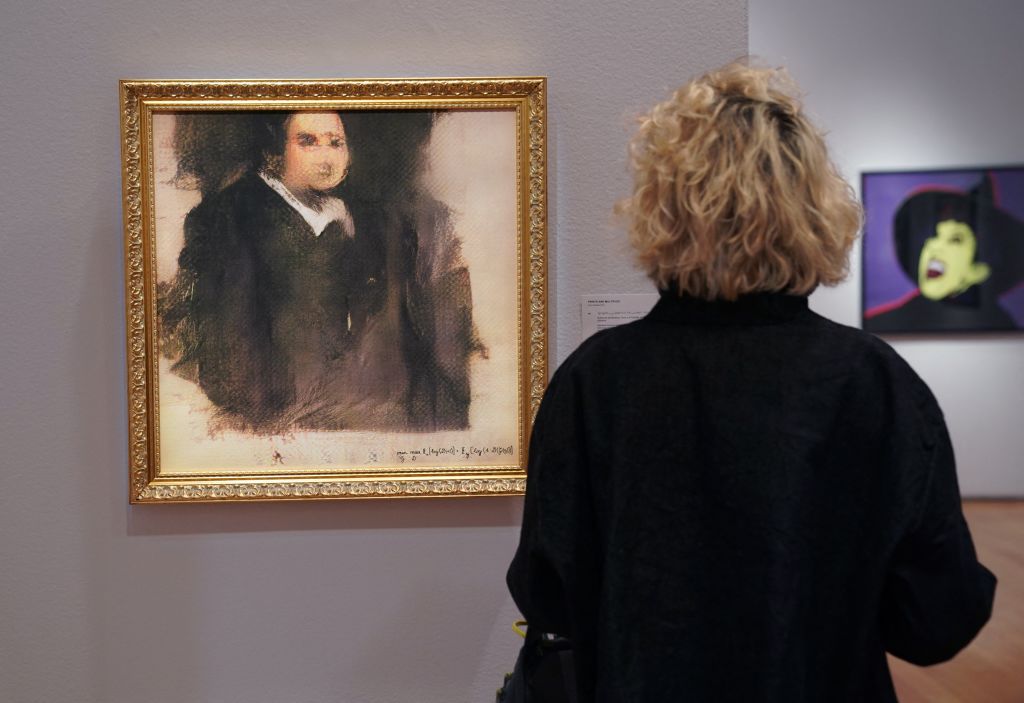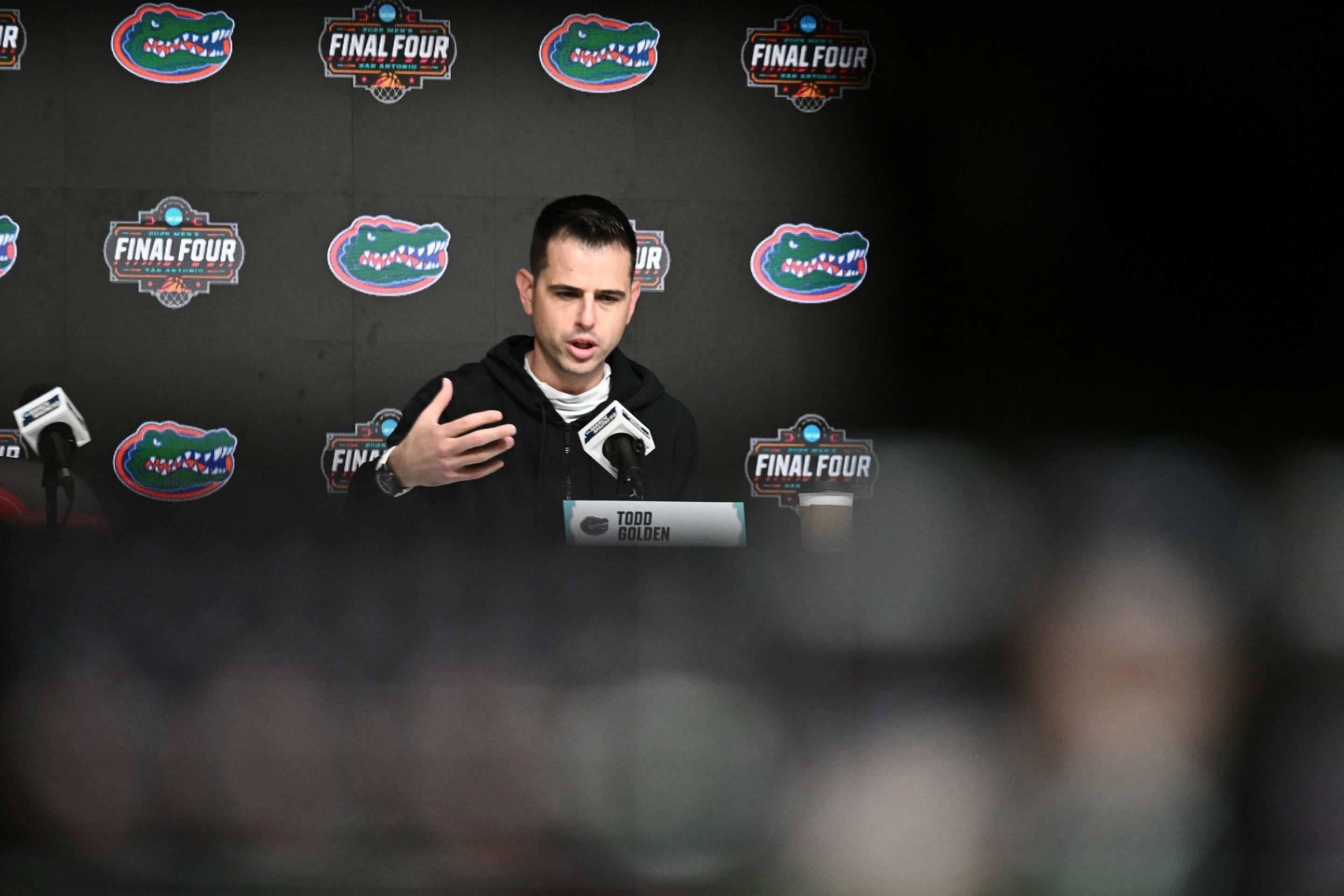Years ago, I remember an image online catching my eye. It was two photos, side by side, that purported to be of a perfectly symmetrical face. In the left photo, the left side of the face had been mirrored, and on the right, vice versa. The photo on the left was demonstrably prettier (in conventional terms) than the one on the right, but that was just that sitter. There were many. And whichever version looked less plain depended on the person’s “better side”—so one person might look “perfect” when their right side was repeated, but even less than they originally did with the other side. Artist Alex John Beck had produced the images for a project called "Both Sides Of" to disprove the theory that beauty lies in symmetry. “I think they lack character—beauty is more based on character than an arbitrary data point,” he told Time Magazine in 2014. “Humanity is messy and should remain as such.”
The weird thing about it was that Beck didn’t include the original photo of each sitter. He called it just a "boring portrait," and anyway he didn’t want viewers constantly referring back to it. In a similar work, "Symmetrical Portraits," by Australian artist Julian Wolkenstein, the images were juxtaposed with the original. In this case, Beck’s quote makes more sense. In the context of the initial image, you pick up from the symmetrical images a clear loss of dynamism, a flattening. And while one symmetrical side is always traditionally better looking than the original, it’s less inviting. It’s as though during the split second in which you first meet someone, with their two slightly different halves, you get a flash of all the alchemy that went into them looking the way they do, from the way their parents' genetics combined to the way that combination was affected by various chemical reactions in the womb, to the various levels of chance and timing and just spontaneous chaos of existence that made them what they are—everything that makes even twins not really twins, and a face not quite perfectly balanced. It makes an individual an individual, but it also has a kind of engrained vitality because of that. This is what Beck calls messy and what others might call unpredictability.
I thought of these photos when I read about The Decemberists lead singer Colin Meloy using the ChatGPT bot to AI-construct a facsimile of a Meloy composition, including cords. The result was “Sailor’s Song,” which, according to the musician is, “What someone might think a Decemberists song sounded like if they’d skimmed a few reviews, observed some fairly skin-deep Twitter hot takes.” Meloy himself noted this went beyond the repeated or missing bits and the mistakes. “It has data, it has information, but it has no intuition,” he wrote. “So much of songwriting, of writing writing, of creating, comes down to the creator’s intuition, the subtle changes that aren’t written as a rule anywhere—you just know it to be right, to be true.”
In The New Yorker, Ted Chiang described ChatGPT as a “blurry jpeg of all text on the web,” which is in line with art generators like Midjourney and DALL-E 2 (good name), which are blurry jpegs of all the image on the web. You may have noticed a growing number of lawsuits filed by artists around online copyrights, and that is because these tools do not create out of nothing, but use existing artifacts created by actual people, with the permission from those people not apparently a priority in this origin story. While AI generated art can be plausible enough to need the original to confirm its artifice, a closer look often reveals the “lossy text-compression algorithms,” as Chiang calls them, which cause a kind of vagueness or a blur that does not exist when, say, you have a real human forgery. In harmony with Meloy, Chiang sums up the creative process that AI lacks: “Your first draft isn’t an unoriginal idea expressed clearly; it’s an original idea expressed poorly, and it is accompanied by your amorphous dissatisfaction, your awareness of the distance between what it says and what you want it to say. That’s what directs you during rewriting...” He concludes: “How much use is a blurry jpeg, when you still have the original?”
To illustrate how the mind works in a kind of mercurial way that a computer does not, my friend had sent me the Meloy story and then, as it had gone up the same day, Mary Gaitskill’s eviscerating review of Women Talking. Ostensibly these two pieces of writing have nothing in common besides their publishing date. But because my reading of Gaitskill’s piece was somewhat colored by my recent reading of Meloy’s, and because of my pre-existing knowledge of Sarah Polley and her work, I was more poised to notice this line about her latest film: “Its execution is numbingly didactic and infused with awful propriety; the characters are fixed as ‘positions’ rather than people, the performances blatantly actorish, hammed up by dialogue that asks to be delivered like oratory.” I was primed to notice Gaitskill pointing out a thing Polley does sometimes that is not particular just to her but is a larger issue in the arts (and frankly not something I am unfamiliar with myself), which is allowing your work to be influenced by external pressure, whether by some arbitrary rule or imaginary standard. In Polley’s case, this manifests as what Gaitskill calls “the conventions of virtuous message-driven art.” All of these things cause tension with your instincts, and, if they win out, flatten your work. The result is a partly dictated piece of art, the same way AI art is dictated. As Gaitskill wrote, “The world of Women Talking is vague and generally rendered.”
In the back of my mind at the same time, floating around, was tech writer Kyle Chayka’s tweet thread about everything moving towards the generic. "Algorithmic feeds have pushed content creators to conform to the acceptable aesthetic and cultural average; A.I. generation will just automatically produce that average from the start,” he wrote. “And the average will entrench itself much faster because more content generation is happening, not just from ‘creators,’ but from any random user, who is probably less interesting or innovative even than an algorithmically popular creator." And the part I retweeted: "Average Garbage Forever is the single commandment of 21st-century culture."
I don’t recall if I saw this before or after I saw in passing that Netflix’s Chief Content Officer, Bela Bajaria, had compared the ideal show to a “gourmet cheeseburger.” It is this sort of formulaic approach that starts to degrade your "product" to the point that your "customers" can’t help but notice. It is this formula that also produces a band like Måneskin and a takedown that is itself a piece of art. ("The production sounds so cramped, digitized, and swagless that it seems to be optimized for getting busy in a Buffalo Wild Wings bathroom.") Which is the best I can say about AI art, that it is ripe for parody and sometimes provokes actual invention.
You may have heard about "Edmond de Belamy," the portrait of a blurry man that kind of reminds me of the cover of my copy of Scarlet and the Black if I’m not wearing my glasses (a close-up of a French painting from 1800 fittingly titled “Portrait d’Inconnu” by Pierre-Paul Prud'hon). Framed by gold-painted wood, it is a print on canvas, which was created by an algorithm (part of the code serves as the signature in the bottom right) which referenced thousands of portraits across six centuries. Announced as the first artwork created by AI to be featured at a Christie’s auction, it sold for $432,500. A French art collective that specializes in AI called Obvious—Pierre Fautrel, Hugo Caselles-Dupré and Gauthier Vernier—were criticized not only for making nothing much (like found objects never even happened) but for largely using code that was not even their own. “We are the people who decided to do this,” Fautrel argued, “who decided to print it on canvas, sign it as a mathematical formula, put it in a gold frame.” And it is hard to fault them too much in a world in which Jeff Koons’s $58.4 million “Balloon Dog” exists.
Still, it’s also hard not to think of tech and art as being fundamentally at odds when you consider how many artists’ livelihoods have been decimated by its "advances." This reminds me of the tech CEO who bought the media site I used to write for not too long ago. Like so many of those purchases, which start out as vanity projects but end up largely discarded, there was a fundamental misunderstanding of the process of producing a piece of writing. The CEO seemed incapable of comprehending why each story—researched, reported, edited, fact-checked, copy-edited—shouldn’t require less money, fewer people, less time. Every story seemed to be conceived of by him as indistinguishable from every other, each one equivalent to a simple bit of code, with no obvious qualitative difference. This was a person who appeared to only see things in a programmable, predictable way. Which is to say, a person who doesn’t understand the problem with a world entirely populated by symmetrical faces. And, sure, maybe sometimes we can’t tell because these artificial creations mimic reality so well; maybe sometimes they can even trick us into thinking they look better than reality, but, ultimately, they are not alive. And if you don’t know the difference—more importantly, if you don’t care—then maybe they are all you deserve.






